Peer into how teachers prepare classrooms for new school year
![Upper school history teacher Byron Stevens unpacks a box in his classroom in preparation for the new school year. "The most fun is just the anticipation and the excitement as [the start] gets closer, and I have the greatest job in the world because it could start over every August," Stevens said.](https://harkeraquila.com/wp-content/uploads/2024/08/stevensDSC_6361-e1724541433242.jpg)
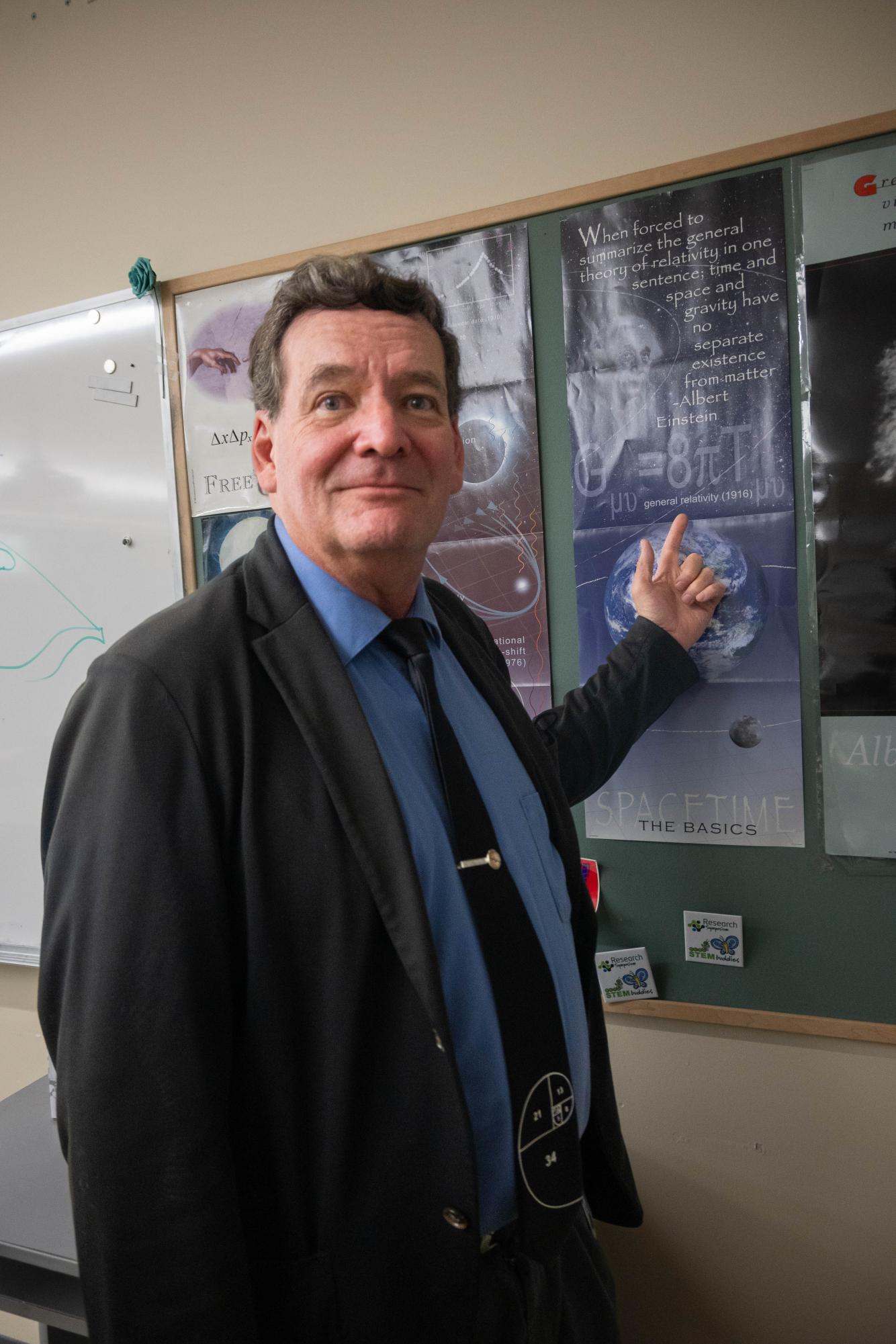
Einstein’s general relativity equation. The Hubble Space Telescope surveying purple hazy galaxies. Los Alamos. NASA. These are all words you can expect to spot on the assorted physics and astronomy posters plastered across the walls of Dr. Eric Nelson’s classroom in Nichols 312. For him, the value of classroom decor lies in the subjects contained within, not just the look or style.
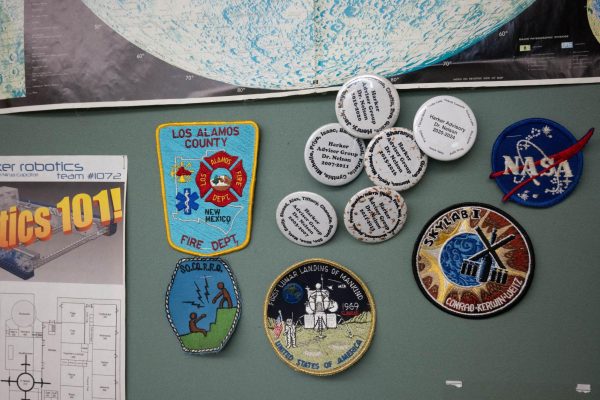
“Everything in here is a talking point. At some point during the semester, I can point to it and bring it up,” Dr. Nelson said.
Dr. Nelson teaches a wide range of classes at the upper school, including AP Physics C, Modern Physics, Astronomy and computer science electives like Neural Networks and Programming Languages. Although he works on the tedious preparation, like populating calendars with assignments, one to two weeks before school, course curriculum planning begins several weeks prior.
This year, AP Physics C uses a new version of the textbook, so Nelson spent the past month migrating from the 10th edition to the 12th edition, realigning problem numbers and updating assignments, which takes around 40 hours of work. As for Modern Physics and Astronomy, he always makes sure to keep the course content up-to-date with the most recent scientific breakthroughs. Some of this year’s pressing questions include galaxies forming earlier than expected and the inconsistencies associated with tachyons, hypothetical particles that travel faster than the speed of light.
“Newtonian mechanics hasn’t changed since around 1650, and is unlikely to change in the immediate or distant future,” Dr. Nelson said. “But, modern physics always gets updates because things happen every year. There’s always something new.”
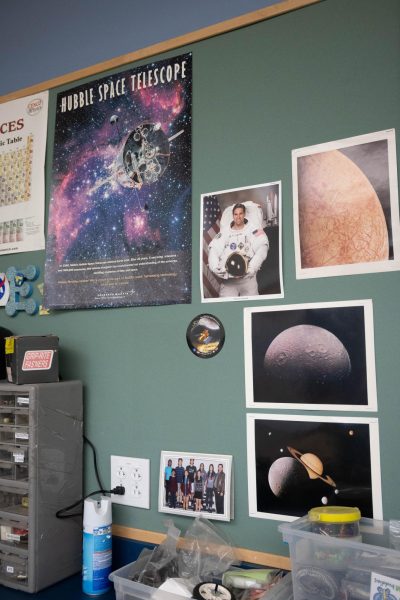
As the year progresses, he likes to set up demonstrations around his classroom so students can better grasp concepts by seeing them in action. For example, he uses air carts and marble roller coasters as part of lessons on kinematics in AP Physics C. Across all the objects in his classroom, he most cherishes his plastic flying pig that hangs from the ceiling above.
“[The pig] has been dropped, broken, damaged so many times that it’s being held together with super glue and duct tape at this point in time,” Dr. Nelson said. “I use it to discuss uniform circular motion outside the plane of motion because it flies in a cone. I also have a flying cow [as a back-up], but it doesn’t have that same feel as the flying pig.”
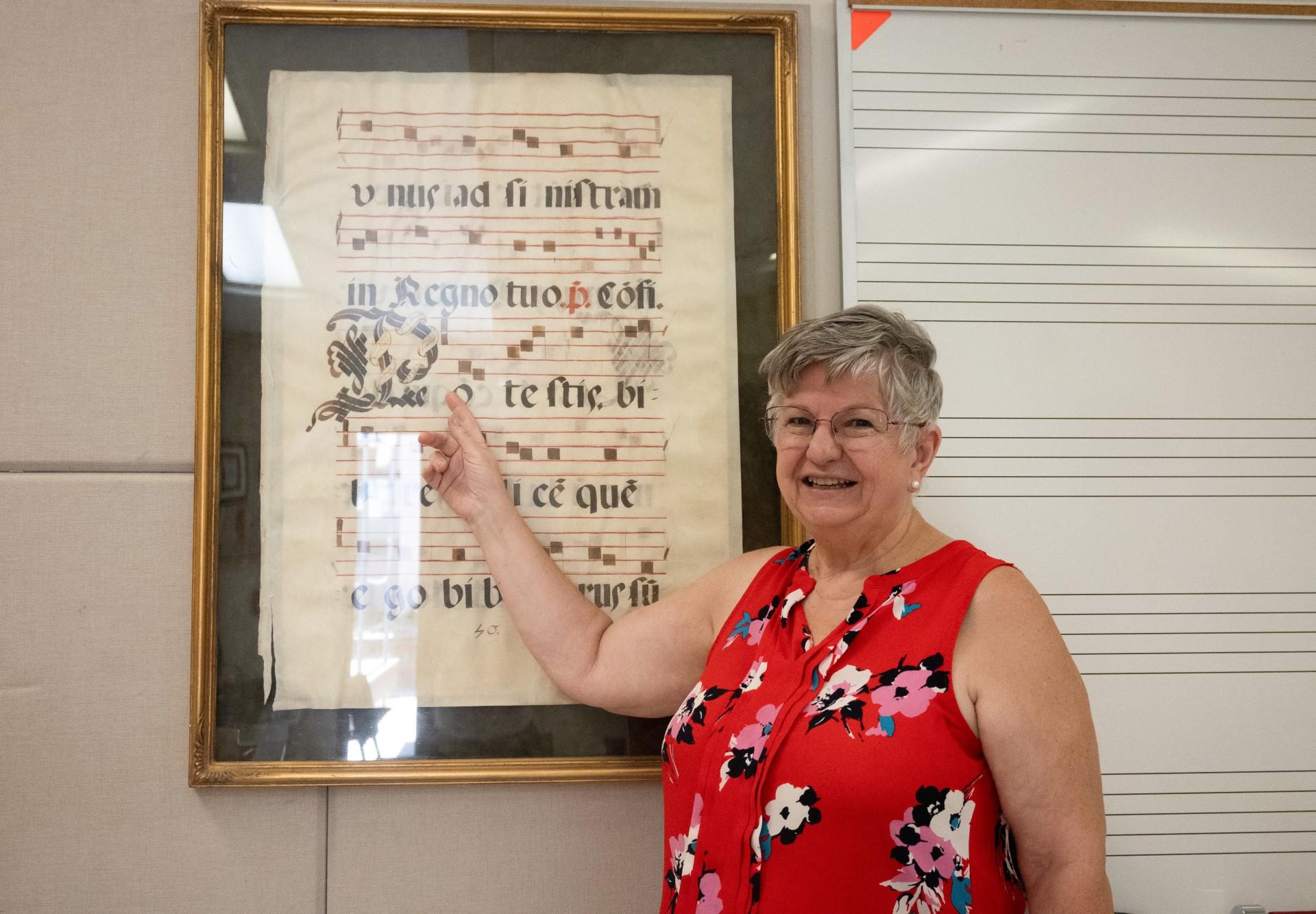
Dots, lines and dashes on sheets of paper may not seem like much to the casual observer, but to music teacher Susan Nace, they work together to form wondrous compositions and magnificent melodies.
Teaching music involves a lot of performance scheduling and music selection, so Nace typically begins her preparation the spring before summer starts. She first sifts through different kinds of pieces that could possibly fit Harker’s ensembles. At the same time, she also maps out the calendar for the new school year, planning rehearsals and concerts.
“For some things, we can only choose once we get to see our students because we don’t know what their capabilities are,” Nace said. “But, for groups like Downbeat and Capriccio, we start looking at music really early. It’s just a matter of getting things going.”
Her preparation further extends to sorting through and setting up decor. Among all of the items that live in her room in Patil 52, one of the oldest members is a Gregorian chant dating back to 1553, notated with blank ink on a sheet of sheepskin. This piece of musical history once served as a guide for choristers singing in a Roman Catholic church, but it has long since been relieved of its duties, now resting in a frame for students to see. Nace originally found this medieval relic for sale while shopping at a local flea market.
“I was looking for something in particular, and I walked by and saw it. I went back, looked and thought, ‘This can’t be real,’” Nace said. “That was maybe around 2005. I imagine that it belonged to a professor, and he may have died in his estate and somebody went to the estate sale and it’s here now.”
Whether she’s teaching choir, composition or music theory, Nace always makes sure students feel comfortable and at home walking into her classroom. Her wide assortment of furnishings help imbue this spirit, from posters with welcoming and inclusive messages to a row of multi-colored banners strung across the ceiling, featuring the words ‘Courage,’ ‘Joy,’ ‘Spirit’, ‘Celebrate,’ ‘Community,’ ‘Equality’ and ‘Diversity’.

“One of our librarians came in once, and she said it feels so peaceful here,” Nace said. “That’s the attitude I want to bring to my students. We’re going to learn together, explore together, wander together, ask questions together, and we’re just going to have a great time.”
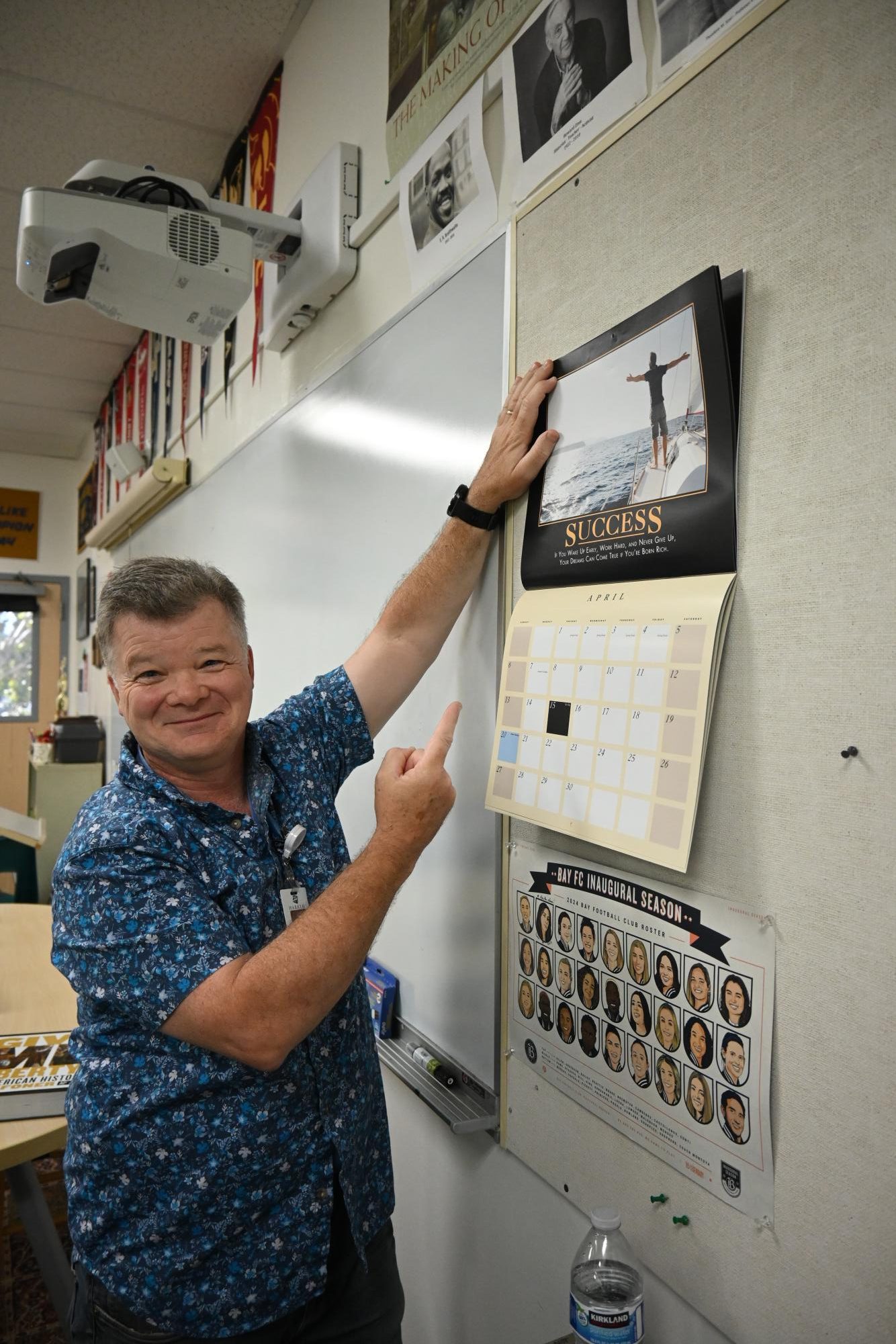
The door to history teacher Byron Stevens’ room, Shah 409, appears unassuming to the average passerby. To his students, though, it’s no secret that he’s an avid Notre Dame football fan. If he wasn’t vocal enough about the college team, his choice of wall decor is sure to pique interest: a horizontal lineup of multicolored pennant flags showcasing Notre Dame’s annual football schedule, meticulously hung in chronological order above his whiteboard.
“A couple of years ago, I started buying the pennants on Amazon, at Varsity Shop or College Shop,” Stevens said. “Over the course of the year, I have to do the climb of shame: I climb up there and I turn the pennant upside down if we lose the game.”
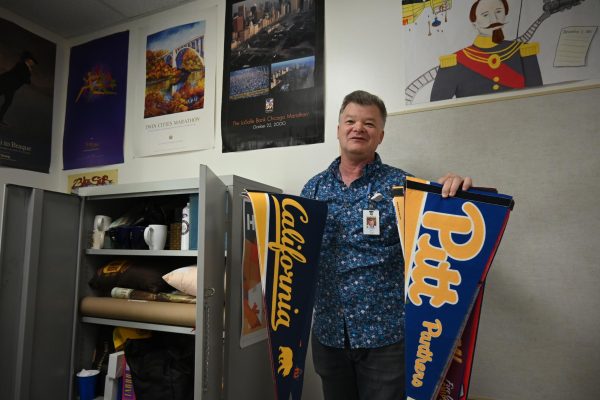
A second look around the room reveals that the pennants aren’t the only topic of conversation. Stevens displays several more whimsical trinkets throughout his room, including but not limited to a melting clock on his desk referencing “The Persistence of Memory” painted by Salvador Dali, a Sigmund Freud action figure still encased in its original packaging, a demotivational calendar and two large, surprisingly real Boston fern plants suspended from the ceiling with backstories of their own.
“I came here in 2015, and it was in the midst of the Democratic primaries for the election, still kind of between Hillary Clinton and Bernie Sanders,” Stevens said. “I noticed this nice window and I thought, ‘Yes, it’s perfect.’ I had a student who said these ferns needed names, and Fernie was easy, and then we came up with Fillary. That’s funny because Fernie’s on the left.”
Stevens typically begins preparing his classroom in August and works on it for around a week. When students walk in for the first time in late August, he wants to set a tone of hard work while still encouraging a lighthearted learning experience right from the start.
“The vibe I’m going for is serious but fun,” Stevens said. “I want my room to be welcoming but also visually stimulating, show a lot of history-related stuff but not exclusively, be a reflection of my personality and my sense of humor and let that come through in various ways.”
As this school year approaches, he hopes that teaching World History and European History will make an impact in more ways than one.
“The most fun is just the anticipation and the excitement as it gets closer, and I have the greatest job in the world because it could start over every August,” Stevens said. “Every year is different. I can’t wait to meet the new kids on the first day and see which section is gonna be the sleepy one and which one’s gonna be the funny one. I’m trying to figure out what makes a difference.”
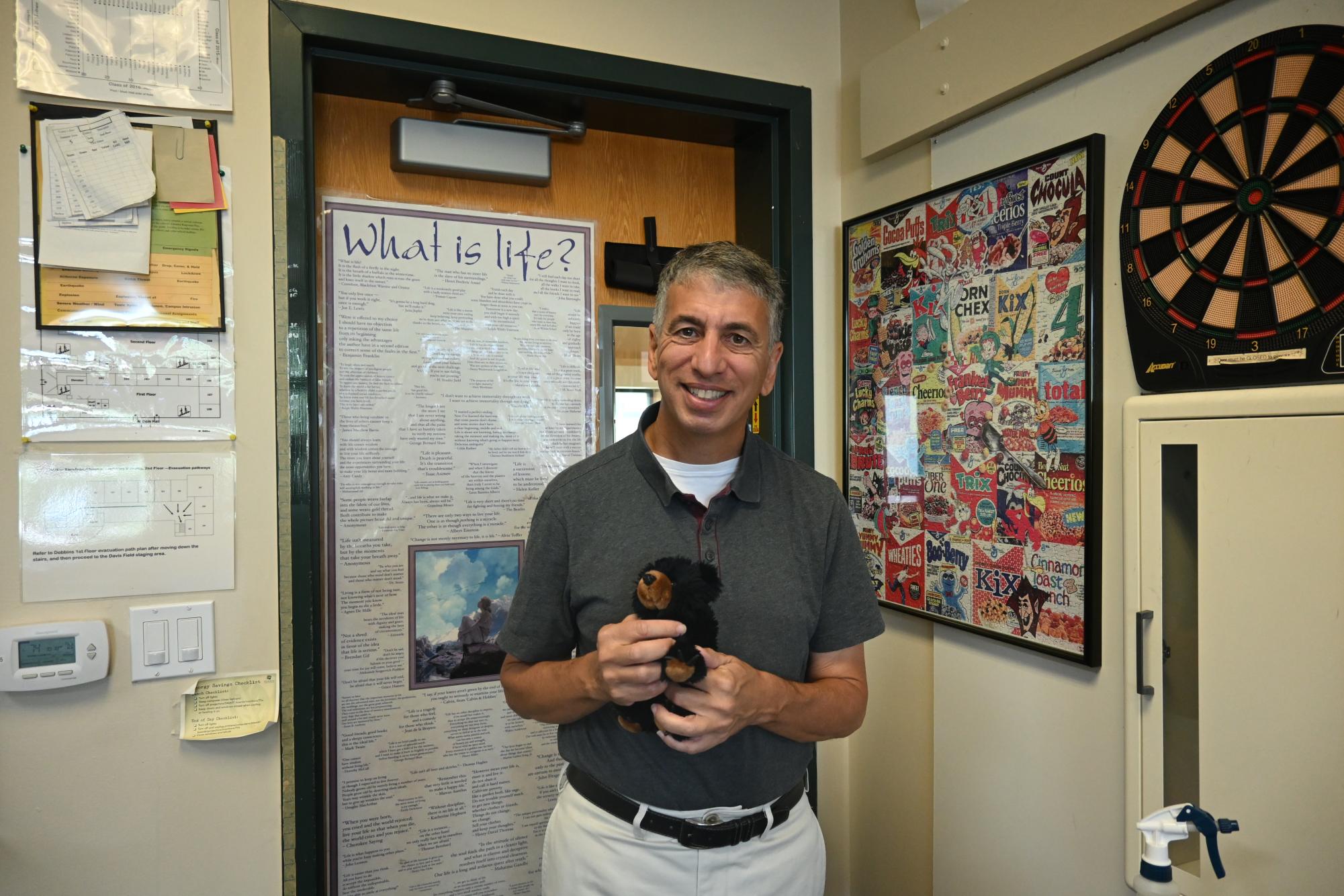
Anthony Silk serves as the chair of the math department and teaches calculus, but his classroom’s interior suggests he’s more than just a math whiz. In fact, the subject takes up only a sliver of his space, leaving students with a whole new indoor world and all four colorful corners to conquer.
“My initial plan was no math in the room,” Silk said. “The theme is very conceited. The theme is me. It is things that make me happy and relaxed, so my hope is that it will make students feel relaxed.”
Silk allows his room decor to reflect this freedom of expression. Along with a Hot Wheels track along the side of his room, dozens of Disney-branded Band-Aid boxes stacked behind his desk, two wall-mounted cereal and hot chocolate puzzles reflecting his love for both and a complex Lego model of the Atlas rocket, he also displays his two stuffed teddy bears named Bear Minimum and Bear Maximum. Ever since Silk acquired the former bear from a Harker picnic event and the latter as a gift from a student several years ago, both have become adorable staples of his classroom.
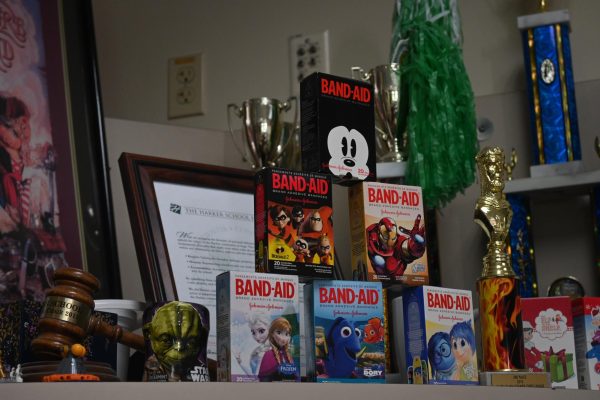
“Whenever I’m teaching minimum or maximum, they come in,” Silk said. “One of the things that I really like about Bear Minimum, other than the fact that he’s super cute and people remember him, is that he’s a nice little comfort. A lot of students hold him.”
As department chair, Silk starts preparing for the new school year as early as May and June when he administers student challenge and placement exams for different levels of math classes. Then, at the beginning of August, he arranges meetings with the math department and facilitates the curriculum planning process for other teachers. The second half of this preparation also involves setting up the classroom: Silk populates a “Silk Stuff” bulletin wall with pictures to showcase what he did over summer vacation, rearranges the numbered desks and writes lectures and tests for his calculus courses. As for his second semester Engineering elective, he begins preparing its material over winter break.

“That’s what all the teachers are doing, just to get our rooms ready and our brains ready,” Silk said. “My room is just a little crazier than some of the math rooms. I’ll clean up these things here and start throwing stuff out and putting new stuff out. But again, a lot of it is fortunately the same.”
All in all, Silk infuses his room and teaching style with a fun, humorous approach to life that he hopes will spill over to his students.
“The idea is when you’re in here, you don’t have to think, ‘I’m here because I’m supposed to be learning something all the time, and if I’m not learning something right now, then something’s wrong,’” Silk said. “I want them to think school is about life, and I’m hoping that they can make some connections there.”



